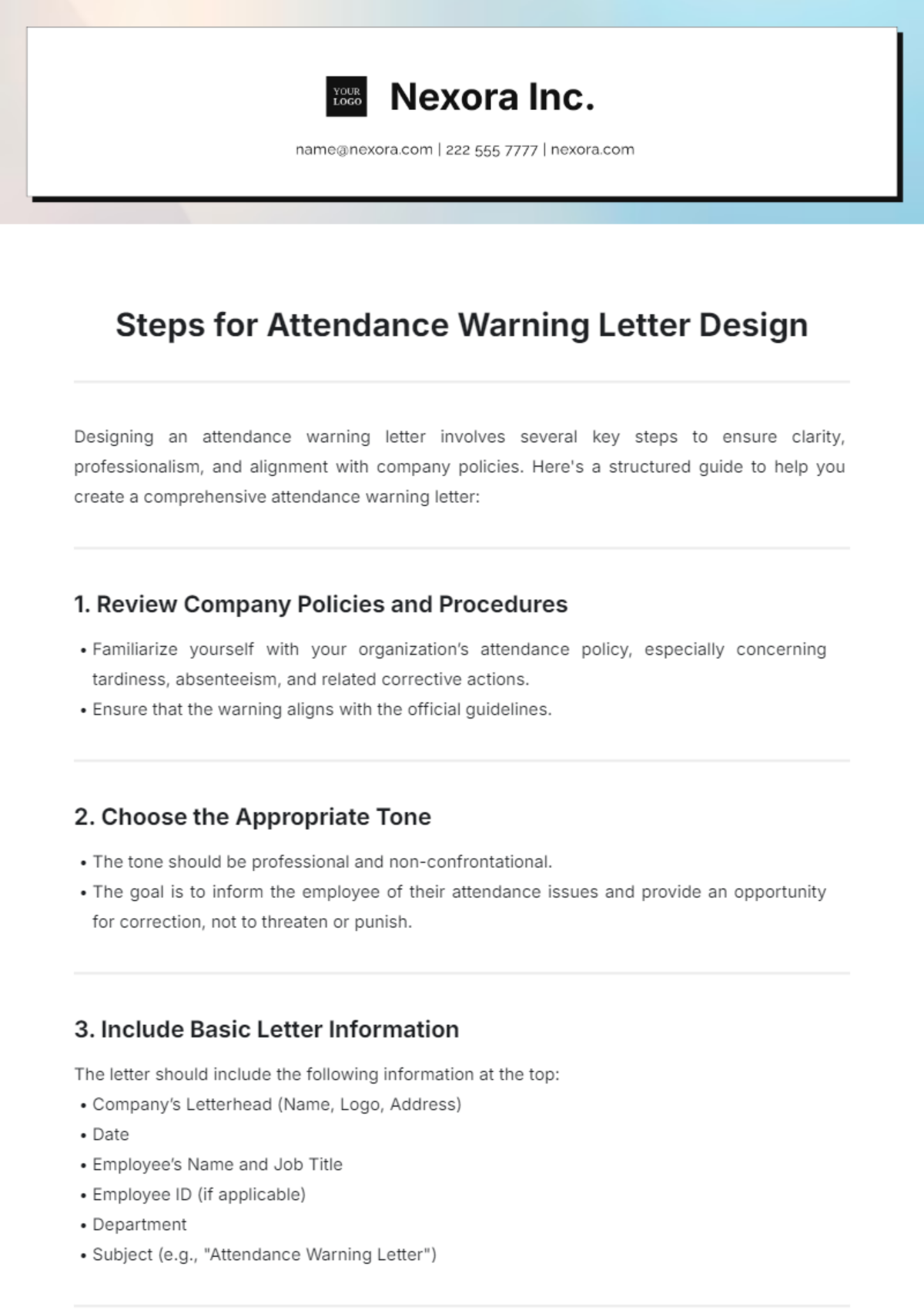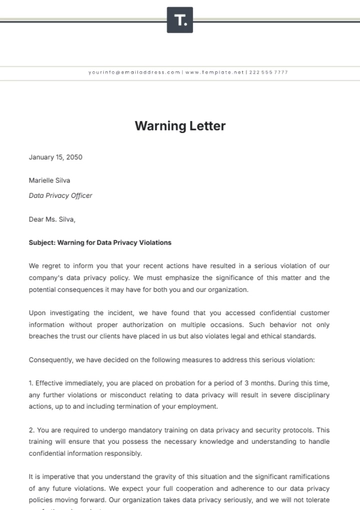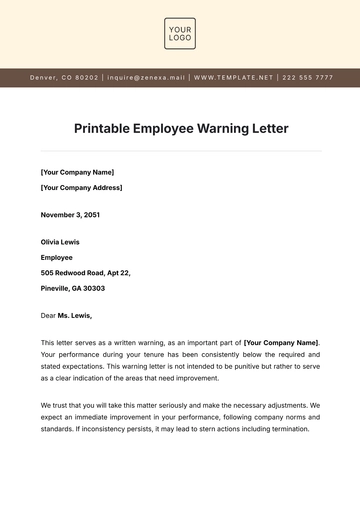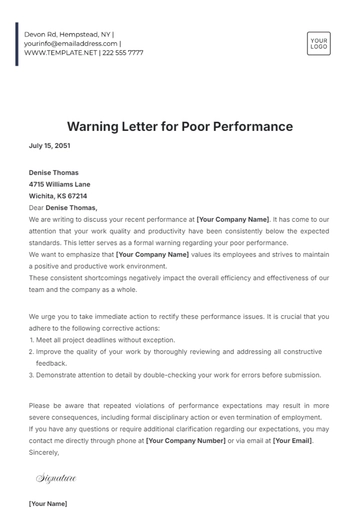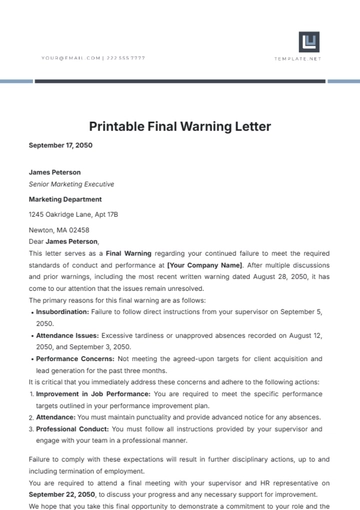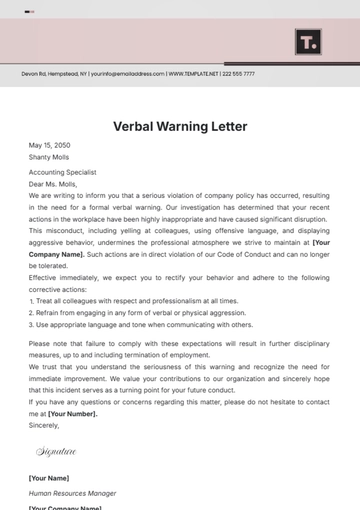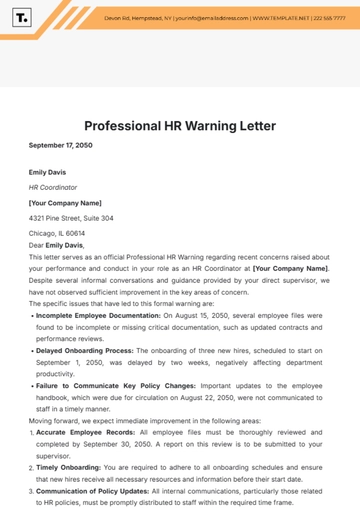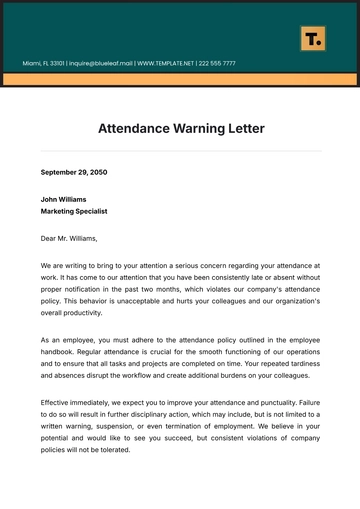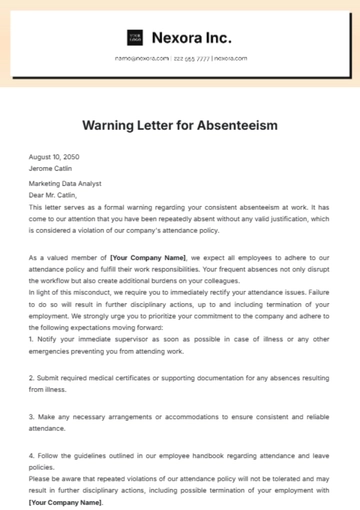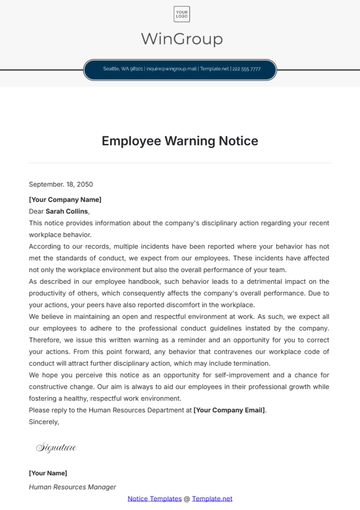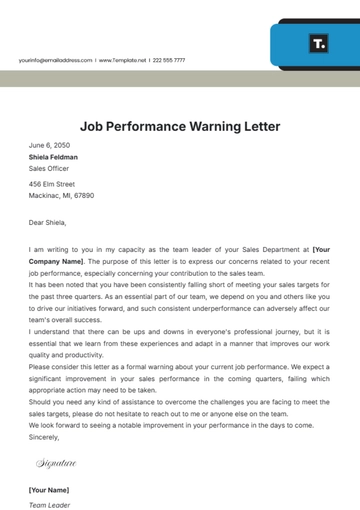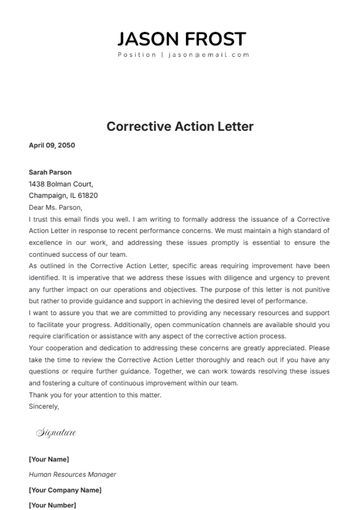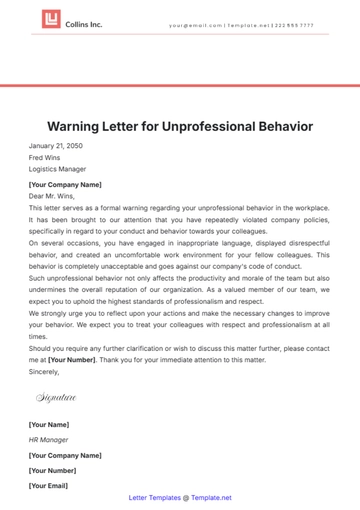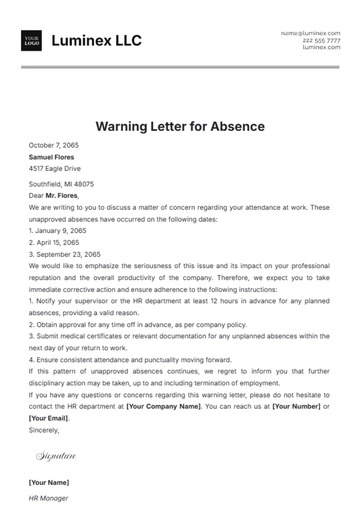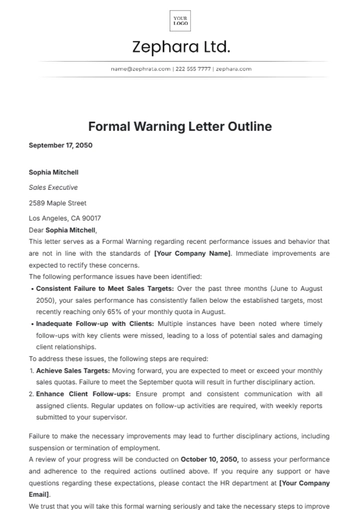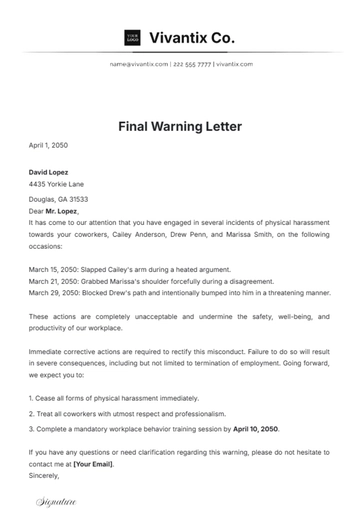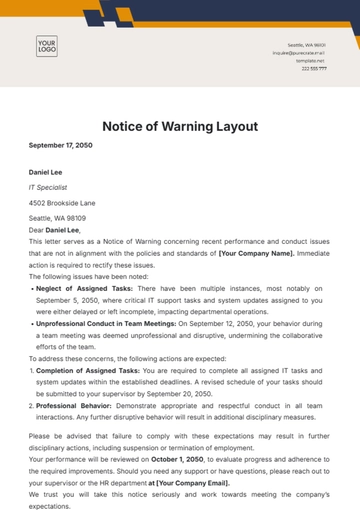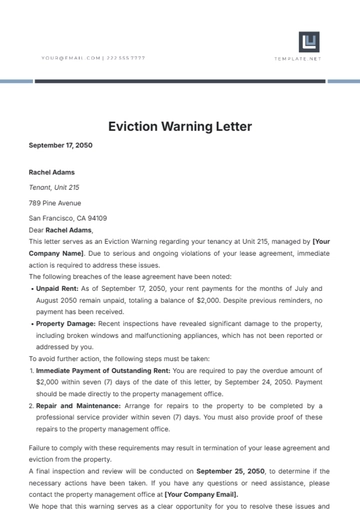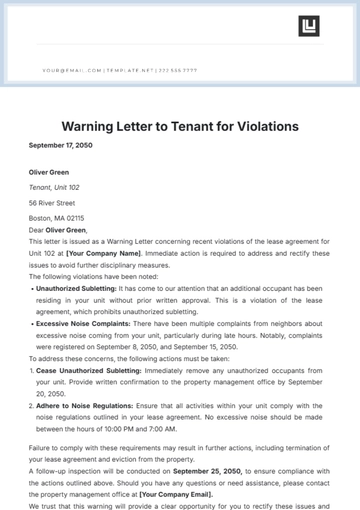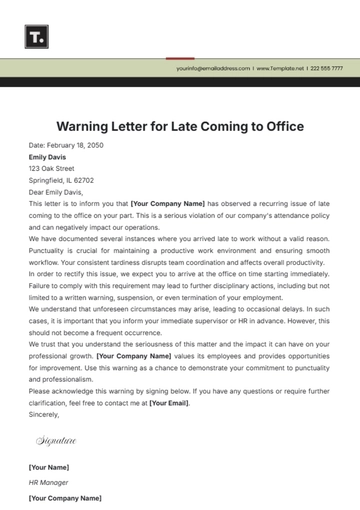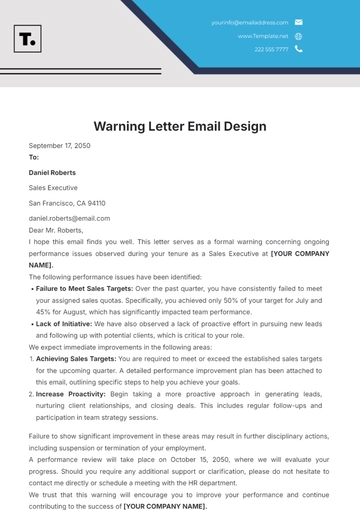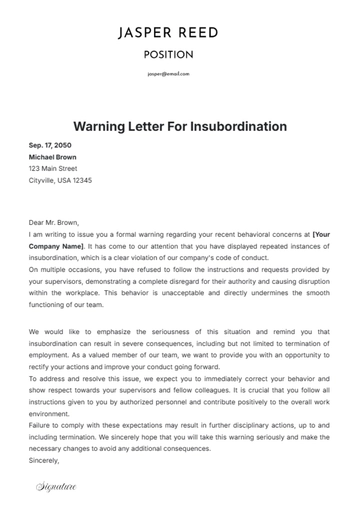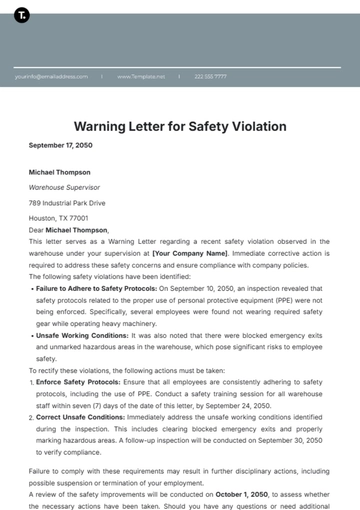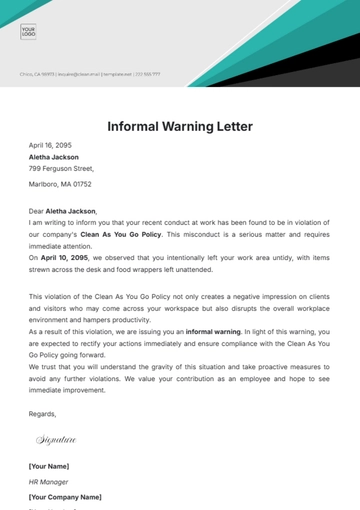Steps for Attendance Warning Letter Design
Designing an attendance warning letter involves several key steps to ensure clarity, professionalism, and alignment with company policies. Here's a structured guide to help you create a comprehensive attendance warning letter:
1. Review Company Policies and Procedures
Familiarize yourself with your organization’s attendance policy, especially concerning tardiness, absenteeism, and related corrective actions.
Ensure that the warning aligns with the official guidelines.
2. Choose the Appropriate Tone
The tone should be professional and non-confrontational.
The goal is to inform the employee of their attendance issues and provide an opportunity for correction, not to threaten or punish.
3. Include Basic Letter Information
The letter should include the following information at the top:
Company’s Letterhead (Name, Logo, Address)
Date
Employee’s Name and Job Title
Employee ID (if applicable)
Department
Subject (e.g., "Attendance Warning Letter")
4. Opening Statement
Start with a formal greeting (e.g., "Dear [Employee's Name],").
Clearly state the purpose of the letter (e.g., "We are writing to address concerns regarding your recent attendance record...").
5. Attendance Issue Summary
Provide specific details about the attendance issue:
Dates and instances of absenteeism or tardiness.
Reference to the attendance policy (e.g., exceeding allowed sick days or habitual lateness).
Explain how this has impacted the team or work.
Example:
"According to our attendance records, you have been absent on the following dates: [List Dates]. Additionally, you have arrived late on [List Dates]."
6. Explain the Importance of Attendance
Example:
"Consistent attendance is critical for maintaining productivity and meeting company goals. We rely on all team members to be present and punctual."
7. Consequences and Next Steps
Mention any consequences of continued absenteeism or tardiness. This could include further disciplinary action such as suspension or termination if the behavior persists.
Offer support (if appropriate), such as discussing underlying reasons for absenteeism or providing assistance if needed.
Example:
"If your attendance does not improve within [specified time frame], further disciplinary action, up to and including termination, may be considered."
8. Provide an Opportunity for Improvement
Clearly define what improvement looks like (e.g., “You are expected to maintain a 100% attendance record for the next [time period] without any further incidents of absenteeism or tardiness.”).
Set a timeline for improvement.
9. Offer a Meeting or Response Opportunity
Example:
"If there are any concerns or circumstances that you would like to discuss, please reach out to your manager or HR."
10. Closing Statement
Example:
"We are confident that with your cooperation, you can resolve this issue and continue contributing positively to the team."
11. Signature Block
End with an appropriate closing (e.g., “Sincerely,”).
Include the name, title, and signature of the issuing manager or HR representative.
If required, add a cc section for HR or upper management.
12. Final Review
Proofread the letter for clarity and accuracy.
Ensure the letter is professional and factual, avoiding any emotional or accusatory language.
Verify that the letter complies with local labor laws and company procedures.
13. Delivery Method
Letter Templates @ Template.net
